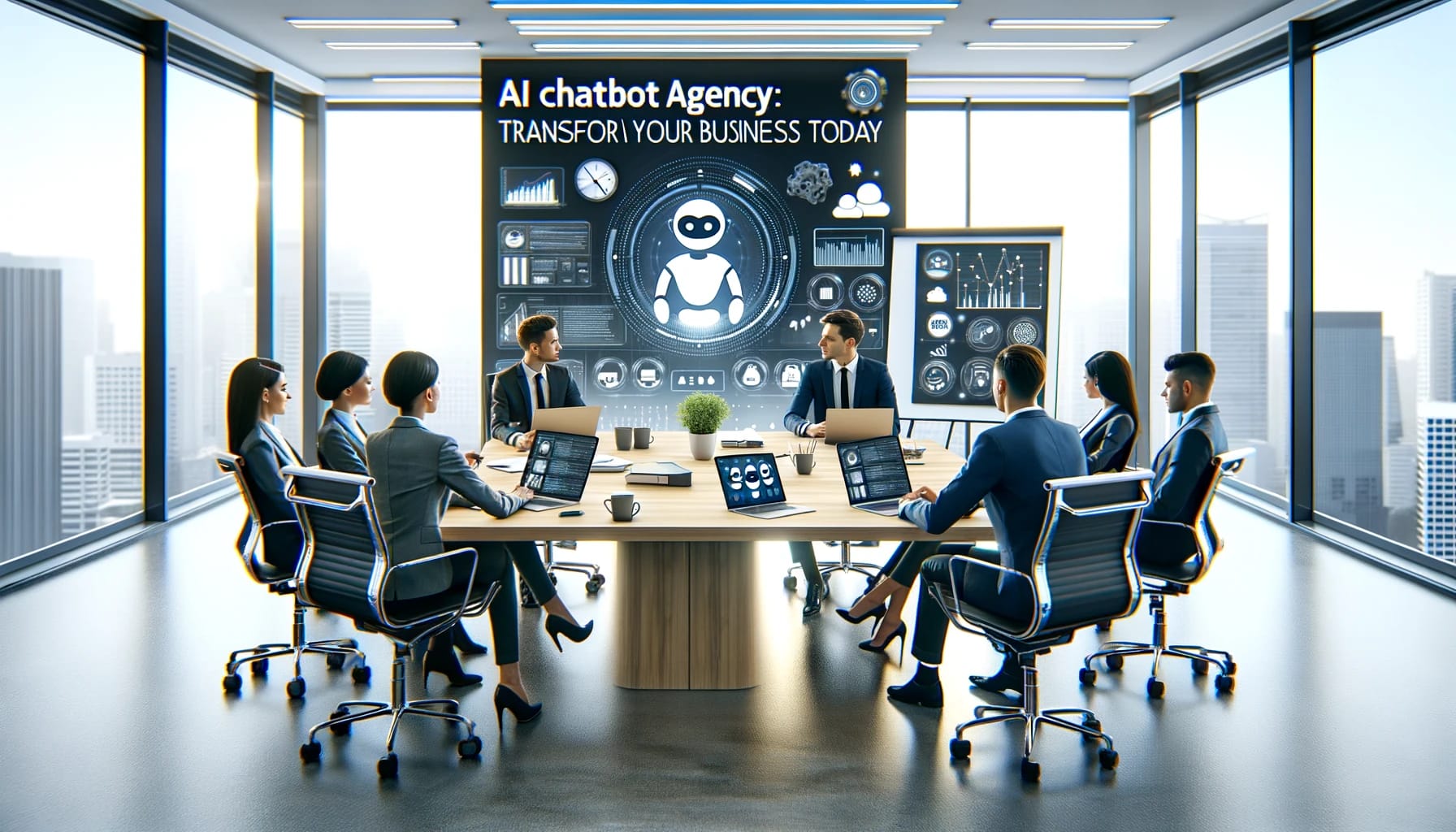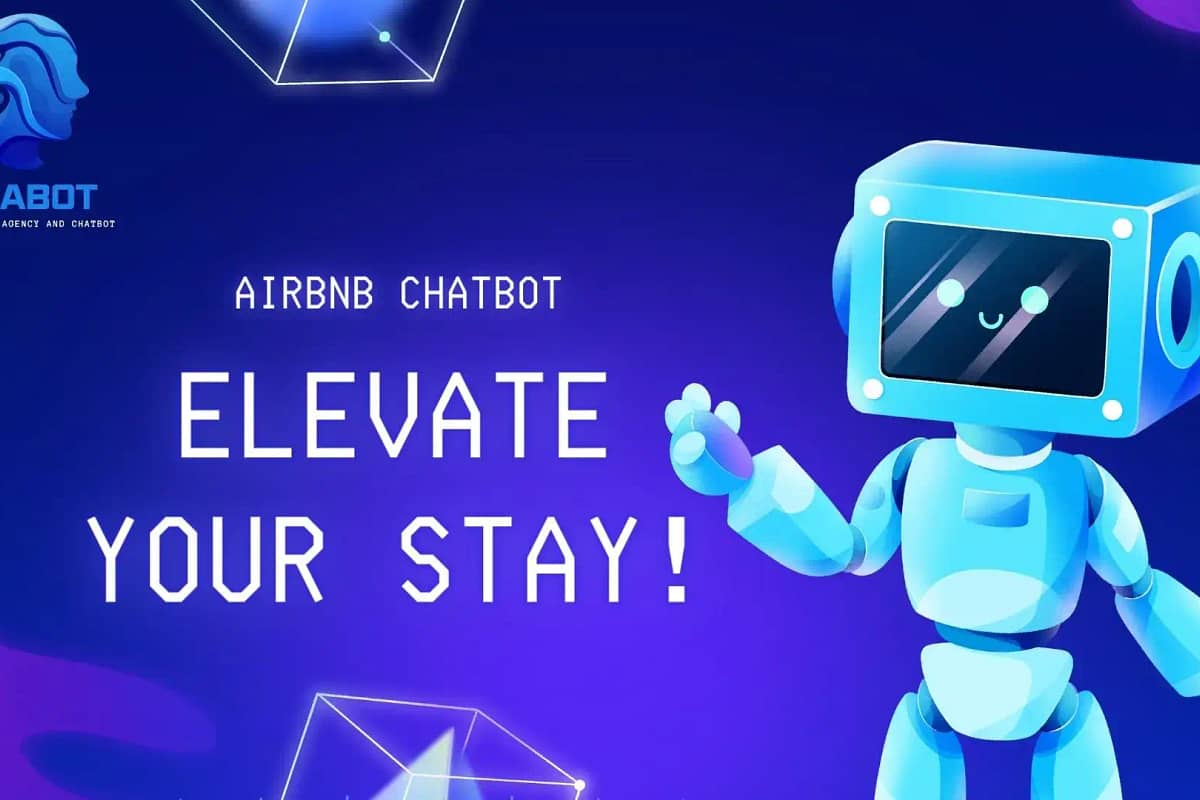80% of businesses are expected to integrate some form of chatbot system by the end of this year. This staggering statistic isn’t just a number; it’s a testament to the transformative power of AI in customer service and engagement. Navigating the vast sea of technology, an AI chatbot builder emerges as a beacon for those seeking to innovate without drowning in complexity. Whether you’re a tech guru or a novice, understanding how to leverage these builders can revolutionize your approach to digital interaction, making your services more accessible, efficient, and personalized than ever before.
Key Takeaways
- Embrace AI chatbots as a valuable tool for enhancing customer engagement and support, recognizing their ability to provide quick, personalized responses 24/7.
- Focus on building conversational AI that feels natural and intuitive, ensuring users have a positive experience that mirrors human interaction.
- Prioritize seamless platform integration to allow your AI chatbot to work efficiently across different messaging platforms and touchpoints, enhancing user accessibility.
- Leverage machine learning to continuously improve your chatbot’s responses, making it smarter and more effective over time by learning from interactions.
- Follow best practices for AI chatbots, including maintaining up-to-date knowledge bases, ensuring privacy and security, and regularly testing and refining chatbot interactions.
- Remember, the goal is to create an AI chatbot that not only meets the immediate needs of users but also anticipates their future questions and concerns, fostering a proactive support environment.
Understanding AI Chatbots

Basics of AI Chatbots
AI chatbots are advanced virtual assistants that use artificial intelligence to interact with users. Unlike traditional chatbots, they understand natural language and learn from interactions. This allows them to provide more accurate responses over time. The key lies in their ability to process and interpret user queries, making conversations feel more human-like.
Benefits for Businesses
Businesses experience significant cost reductions by automating customer service operations with AI chatbots. These digital assistants not only cut down on operational expenses but also drive sales by engaging customers proactively. Their 24/7 availability ensures that customer inquiries are addressed at any time, improving the overall service responsiveness.
Enhancing Customer Experience
AI chatbots excel in delivering personalized experiences by analyzing past conversations. They drastically reduce wait times, ensuring customers receive prompt support. Their capacity to handle multiple inquiries simultaneously ensures high-quality service without compromise, elevating customer satisfaction.
Key Technologies Involved
Several technologies power AI chatbots, including machine learning, natural language processing (NLP), and sophisticated AI algorithms. Data analytics play a crucial role in optimizing chatbot responses for better accuracy. APIs enable seamless integration with existing business systems, enhancing the utility and efficiency of these chatbots.
Building Conversational AI
Designing the Flow
Mapping out conversation pathways is crucial. It ensures virtual assistants can lead or follow discussions effectively. Designers must anticipate user intents and objectives. This foresight shapes a chatbot’s ability to provide relevant responses.
Fallback options are essential when chatbots misinterpret queries. They prevent user frustration by offering alternative solutions or asking clarifying questions.
Training with Machine Learning
A large dataset is foundational for effective training. It equips chatbots with diverse examples of human interaction. Iterative training processes refine a chatbot’s accuracy over time, making it more adept at understanding nuances in language.
Machine learning enables virtual assistants to grasp context. This capability is vital for personalized conversations.
Integrating Natural Language Processing
Natural Language Processing (NLP) allows chatbots to decode human language. Continuous NLP updates are necessary to keep pace with evolving language patterns. NLP plays a critical role in sentiment analysis, helping to gauge customer emotions accurately.
Testing and Iteration
Rigorous testing across various scenarios is non-negotiable. It identifies gaps in a chatbot’s understanding and interaction capabilities. User feedback is invaluable for refining performance, ensuring the virtual assistant remains responsive to changing needs.
The iterative nature of development allows chatbots to adapt over time. This flexibility ensures they continue meeting user expectations effectively.
Platform Integration AI Chatbot Builder

Messaging Platforms Overview
Popular messaging platforms like Facebook Messenger, WhatsApp, and Slack play a crucial role in the AI chatbot landscape. Each platform offers unique benefits but also comes with limitations. Facebook Messenger provides vast access to users globally, making it ideal for broad reach. WhatsApp shines with its end-to-end encryption, ensuring secure interactions. Slack, on the other hand, is tailored for internal team communication, supporting interactive tasks efficiently. Choosing the right platform hinges on understanding your target audience’s preferences and the level of engagement you wish to achieve. An ai chatbot builder can help you leverage these platforms effectively to meet your business needs.
Integration with Facebook Messenger
To set up a chatbot on Facebook Messenger, developers must navigate through Facebook’s developer portal to access necessary tools and APIs. This process involves creating an app, securing permissions, and establishing a webhook for real-time messaging capabilities. The wide user base of Facebook Messenger stands out as a significant advantage, offering businesses the ability to interact with customers across various demographics. The platform’s comprehensive support and documentation assist developers in achieving seamless integration. An ai chatbot builder can simplify this process, providing tools and templates to streamline the development and deployment of your chatbot.
Integration with WhatsApp
Integrating a chatbot with WhatsApp begins with applying for access to the WhatsApp Business API. Once approved, businesses can send templated messages or initiate conversations based on customer actions. WhatsApp’s end-to-end encryption ensures that these interactions remain private and secure. Its global reach significantly impacts customer engagement levels, allowing brands to connect with users worldwide effortlessly.
Integration with Slack
Slack integration enhances internal communications by facilitating direct access to information and support through chatbots. Developers can use Slack’s APIs to create bots that handle specific tasks or provide assistance within the workspace. Its interactive message features foster engaging user experiences, especially beneficial for B2B services looking to streamline operations and support systems.
Leveraging Machine Learning
Understanding Algorithms
Algorithms play a crucial role in how chatbots process and respond to user queries. They analyze the input and determine the most appropriate response based on pre-defined logic and patterns. To enhance chatbot performance, developers can optimize these algorithms for speed and accuracy. This involves refining the decision-making processes to reduce response times and improve relevance.
Regular updates to these algorithms are essential for maintaining chatbot effectiveness. As language evolves and user expectations change, algorithmic adjustments ensure that chatbots remain responsive and up-to-date.
Natural Language Understanding
The difference between Natural Language Understanding (NLU) and Natural Language Processing (NLP) is significant in the chatbot domain. While NLP deals with the broader challenge of understanding human language by computers, NLU focuses specifically on interpreting user intent from their messages. This distinction is crucial for developing chatbots that can accurately grasp what users are trying to communicate. An ai chatbot builder can leverage both NLU and NLP to create more effective and responsive chatbots.
However, NLU faces challenges such as dealing with ambiguity and context in language. These issues require sophisticated algorithms to discern the intended meaning behind a user’s words, which can vary widely depending on cultural or individual differences.
Natural Language Generation
Natural Language Generation (NLG) enables chatbots to construct responses that mimic human conversation. This technology is key to avoiding monotonous, robotic-sounding interactions by introducing variability in how messages are phrased.
NLG plays a vital role in crafting responses that are not only relevant but also tailored to the context of the conversation, making interactions feel more personal and engaging.
Continuous Learning Process
The improvement of machine learning models relies heavily on continuous data collection. By gathering ongoing feedback from users, AI developers can refine their chatbots‘ understanding and responsiveness. An effective ai chatbot builder incorporates these learning mechanisms to continuously enhance the chatbot’s performance.
Incorporating strategies like A/B testing into this process helps identify which approaches yield better engagement rates or user satisfaction, guiding further optimization efforts. The use of real-time data ensures that learning models adapt effectively over time, enhancing the overall quality of chatbot interactions.

Best Practices for AI Chatbots
Personalization Strategies
Personalizing chatbot interactions makes them more effective. Using user data, developers can tailor conversations to match individual preferences. This approach boosts engagement and satisfaction. However, it’s crucial to balance personalization with privacy. A sophisticated ai chatbot builder can help achieve this balance, offering tools to create personalized experiences while maintaining data security.
Protecting user information is a top priority. Personalized interactions must not compromise this principle. When done right, personalization enhances the user experience significantly.
Ensuring User Privacy
To protect user data, developers implement robust security measures. Compliance with data protection regulations is non-negotiable. This ensures that all interactions are safe and private. A reliable ai chatbot builder should incorporate these security features as standard, making it easier for developers to create secure chatbots.
Transparency about data use builds trust. Users feel more comfortable when they know how their information is handled. This trust is fundamental in maintaining long-term relationships with users.
Continuous Improvement
Chatbots need regular updates to stay relevant. Feedback and technological advancements drive these improvements. Scalability is also essential for supporting business growth.
Integrating new features keeps the chatbot competitive. It’s important for businesses to stay ahead by adopting innovative solutions. These efforts lead to better performance and user satisfaction over time.
Measuring Success
Key metrics such as user satisfaction and resolution rate gauge chatbot effectiveness. Analytics tools play a critical role in measuring these outcomes. A comprehensive ai chatbot builder often includes built-in analytics features, allowing developers to track and improve these key performance indicators.
Success metrics must align with business goals. This alignment ensures that the chatbot contributes meaningfully to the organization’s objectives.
Final Remarks
Diving into AI chatbot development transforms how you engage with your audience, making every interaction count. From understanding the basics to leveraging machine learning and integrating platforms, you’ve got the tools to build conversational AI that stands out. Best practices guide your journey, ensuring your chatbots are not just smart, but also effective communicators. This isn’t just about tech—it’s about creating meaningful connections.
Now’s the time to put this knowledge into action. Start building your AI chatbot today and see the difference it makes in your customer engagement strategy. Remember, every step you take towards enhancing your chatbots brings you closer to delivering unforgettable experiences. Let’s make your digital interactions smarter, together.
Frequently Asked Questions
What is an AI Chatbot?
An AI chatbot is a software that uses artificial intelligence to understand and respond to user queries in a conversational manner. It simulates human-like interactions based on the input it receives.
How do I build a Conversational AI?
Start by defining your goals and understanding your audience’s needs. Choose a platform that supports AI and machine learning capabilities. Then, design your conversation flow, train your model with relevant data, and continuously test and improve based on feedback.
Can I integrate an AI Chatbot into my existing platform?
Yes, most AI chatbot builders offer integration options with popular platforms such as websites, social media channels, and customer service tools. This allows for seamless communication across different touchpoints.
How does Machine Learning improve AI Chatbots?
Machine learning enables AI chatbots to learn from interactions, improving their ability to understand nuances in language and context over time. This results in more accurate responses and a better user experience.
What are the best practices for developing AI Chatbots?
Focus on creating a natural conversational flow, ensure quick and relevant responses, prioritize user privacy and data security, continuously gather user feedback for improvements, and stay updated with the latest AI advancements to enhance your chatbot’s capabilities.
Why should I use an AI Chatbot for my business?
AI chatbots can significantly enhance customer service by providing instant support 24/7, reducing wait times, personalizing interactions based on user data, and freeing up human agents to handle complex queries. They can improve engagement rates and help scale your business efficiently.






